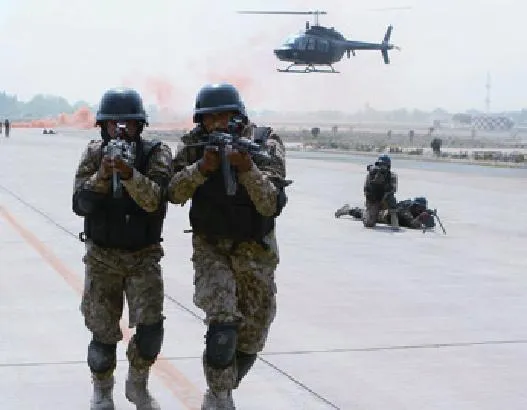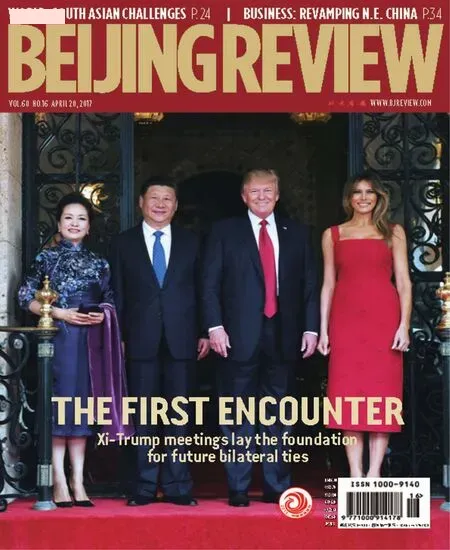Ups and Downs
Ups and Downs
South Asia faces new power equations after geopolitcal changes By Lin Minwang

The author is an associate professor with Fudan University and an academic member of the Beijing-based Pangoal Institution
The keyword to describe the situation in South Asia in 2016 is “change.” Change took place in the relationship between India and Pakistan, which became strained due to increasing conf l ict in Kashmir, a territory both sides lay claim to. There were also changes in relations between them and extra-regional powers, including the United States, Russia and China.
Russia and Pakistan formed closer ties while India and the United States upgraded defense cooperation, though the Trump administration has yet to unveil a clear foreign policy on South Asia. It remains to be seen whether the region continues to become polarized in 2017.
Major changes
To begin with, India and the United States signed the India-U.S. logistics defense pact during Indian Prime Minister Narendra Modi’s fourth visit to the United States last year and India became a U.S. quasi-ally in defense.
There was also rapprochement between Russia and Pakistan. During India’s efforts to isolate Pakistan diplomatically last year, Russia and Pakistan held joint military exercises for the first time. Four years ago, Russian President Vladimir Putin had stopped military technical cooperation with Pakistan for better relations with India. However, Russia not only restarted arms exports to Pakistan, but also held military exercises, the fi rst in history.
Sino-Pakistani ties were also strengthened. The China-Pakistan Economic Corridor (CPEC) comprising infrastructure projects across Pakistan progressed in 2016 and has become Pakistan’s national priority. Chinese economic support including investment will contribute to the development of Pakistan and stability in the Islamic republic. China and Pakistan have close cooperation on both economy and security.
Due to the Kashmir conf l ict, the relationship between India and Pakistan has been strained. Last September, 18 Indian soldiers were killed by Kashmir militia. India alleges Pakistan supported the attackers, which Pakistan denies. In retaliation, India started to try to diplomatically isolate Pakistan.
This included boycotting the 19th session of the South Asian Association for Regional Cooperation (SAARC) Summit which was to have been hosted by Pakistan. Bangladesh, Bhutan and Afghanistan, other members of the SAARC, followed India’saction, which led to the indef i nite postponement of the summit.

Indian soldiers patrol around the military base which was attacked by unidentif i ed militia on September 18
With the conflict between India and Pakistan intensifying, there has been criticism in India of China’s alleged partiality to Pakistan. India accuses Jaish-e-Mohammad, a group based in Pakistan, of being responsible for the September attack. But China, with concerns that the move could only escalate regional tension, blocked India’s proposal at the United Nations to designate Jaish-e-Mohammad chief Masood Azhar a global terrorist.
India’s efforts to be part of the Nuclear Suppliers Group were opposed by China on the ground that countries which have not signed the non-Nuclear Proliferation Treaty should not be allowed into the grouping since its aim is to prevent the proliferation of nuclear weapons.
Subsequently, some steps taken by India are regarded as being retaliatory. These include inviting the U.S. Ambassador to India, Richard Verma, to tour Tawang, a Chinese territory but occupied by Indian forces. India has also supported the so-called international arbitration unilaterally initiated by the Philippines on the South China Sea issue.

Pakistani soldiers take part in an anti-terrorist drill at Multan International Airport in Multan on March 19, 2015
China’s diplomacy
The China-proposed Belt and Road Initiative—the Silk Road Economic Belt and the 21st-Century Maritime Silk Road—is progressing in the region.
Important cooperation projects between China and Sri Lanka have got back on track overcoming obstacles and the Colombo Port City, a project in the Sri Lankan capital contracted to a Chinese company, has resumed work. Sri Lanka’s friendly policy on China was affected after Sri Lankan President Mahinda Rajapaksa stepped down in January 2015. The port city project was halted and it seemed the Maritime Silk Road would suffer a setback.
However, after Ranil Wickremesinghe was elected prime minister in August 2015, the construction of the projects resumed. Wickremesinghe visited China last year and Chinese President Xi Jinping met his Sri Lankan counterpart Maithripala Sirisena in India the same year, which demonstrated bilateral relations are back on track.
In Pakistan, the CPEC has made progress with the Gwadar Port becoming operational. The projects in the corridor have created thousands of new jobs for local people. Last year, Chinese goods consignments set off overland from Kashgar in China’s Xinjiang Uygur Autonomous Region to reach Gwadar Port on the Arabian Sea. From there they were shipped out to the Middle East and Africa, realizing CPEC’s concept of “one corridor with multiple passages.”
In Bangladesh, Xi paid a visit in October 2016, the first by a Chinese leader in three decades, and the two sides signed a strategic cooperation partnership.
The political instability in Nepal remains a matter of concern. In 2015, then Nepali Prime Minister K.P. Oli visited China but had to resign soon afterward. Although Pushpa Kamal Dahal, the current Prime Minister, has said China-Nepal relations enjoy a solid foundation and the friendly bilateral relationship would not change, yet Nepal’s instability has a negative impact on bilateral cooperation projects.
Xi also attended the BRICS-BIMSTEC (Bay of Bengal Initiative for Multi-Sectoral Technical and Economic Cooperation) in India last year, where he expounded China’s position on the development of relations between the two groupings. Xi urged the member states to work together to promote regional economic integration and advance the connectivity of the region.
Unclear U.S. policy
As for the situation in 2017, the new U.S. president is a critical factor. Donald Trump’s policy on India will impact all of South Asia.
India is seeking to establish early contacts with Trump’s team for a smooth transition of bilateral relations. S. Jaishankar, Foreign Secretary of India, has met Trump’s team to build a dialogue channel between the two sides.
While Indian analysts generally believe a Trump presidency is good for India, they still have some reservations. For example, the protectionist nature of Trump’s economic policy will affect India’s outsourcing industry.
The overall view is that India and the United States will have some hiccups in economic cooperation while their defense and security ties will improve. It is widely believed in India that Trump’s anti-terrorism policy and his administration’s policy toward Russia, Pakistan and China will inadvertently strengthen India’s ties with the world’s only superpower.
The diplomatic landscape in the subcontinent is also subject to some other upcoming events this year. There are signs that Russia is considering to join the CPEC; The Belt and Road Forum on International Cooperation to be held in Beijing in May might have some impact on decision-makers in South Asia; India and Pakistan will become full members of the Shanghai Cooperation Organization in June this year. ■
Copyedited by Sudeshna Sarkar
Comments to liuyunyun@bjreview.com

